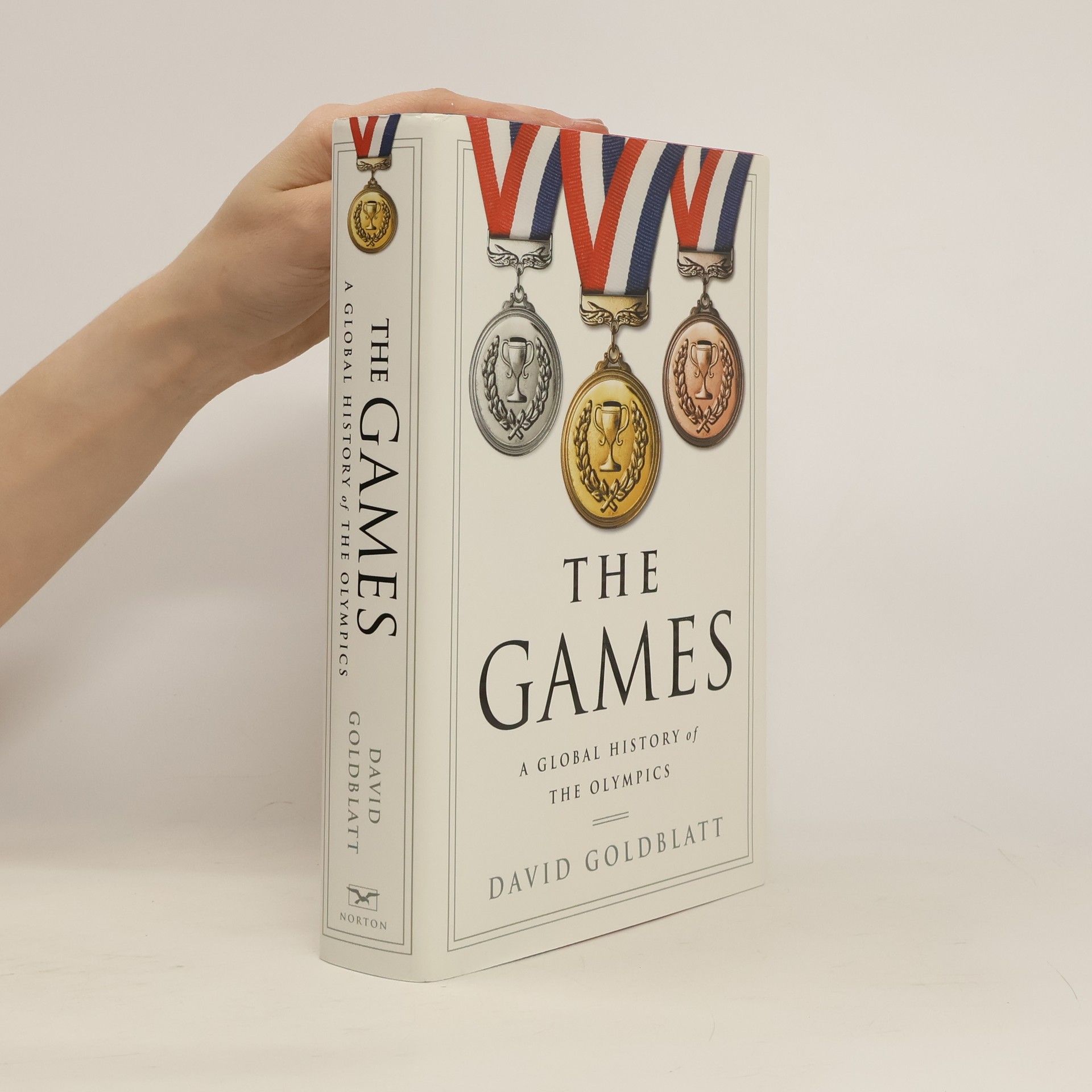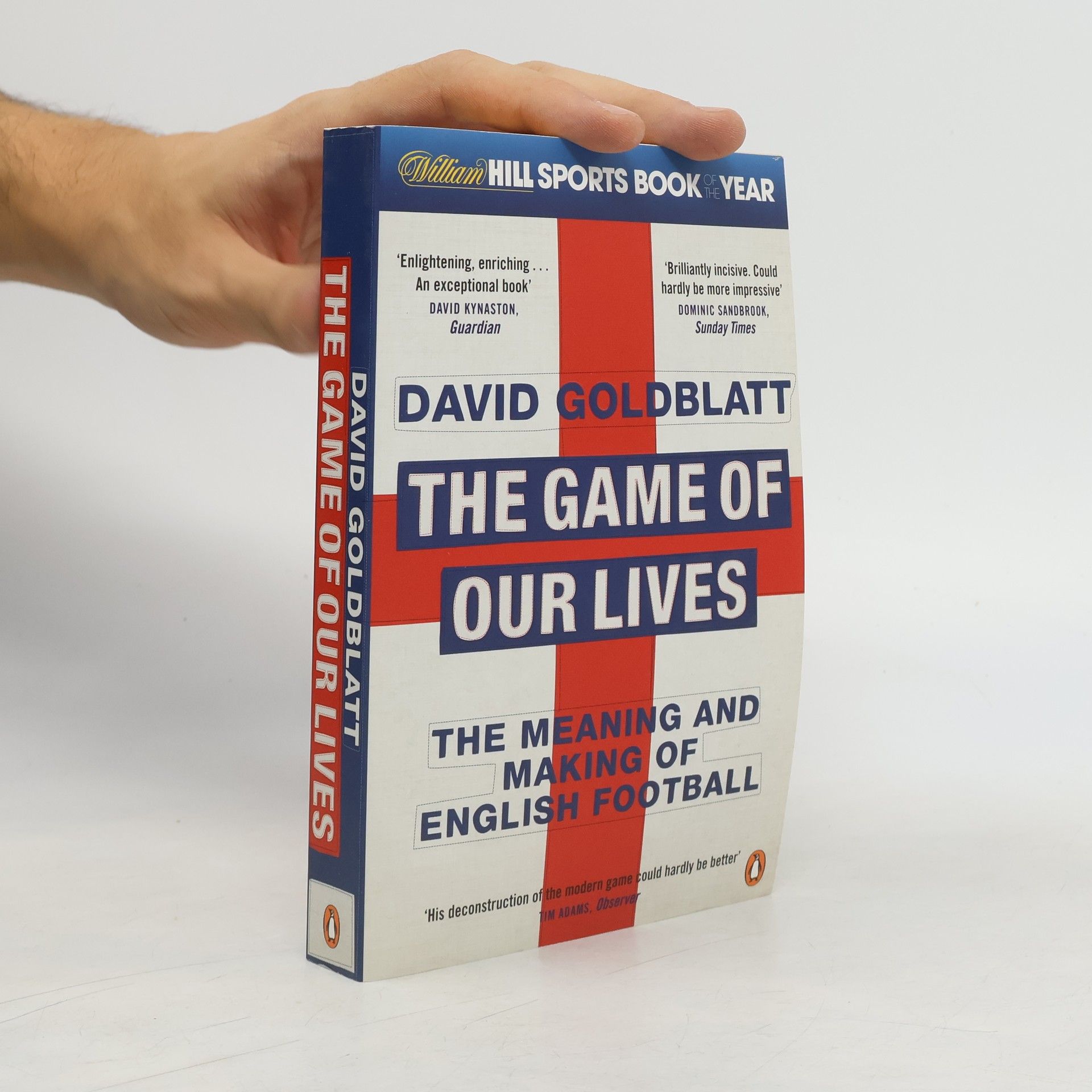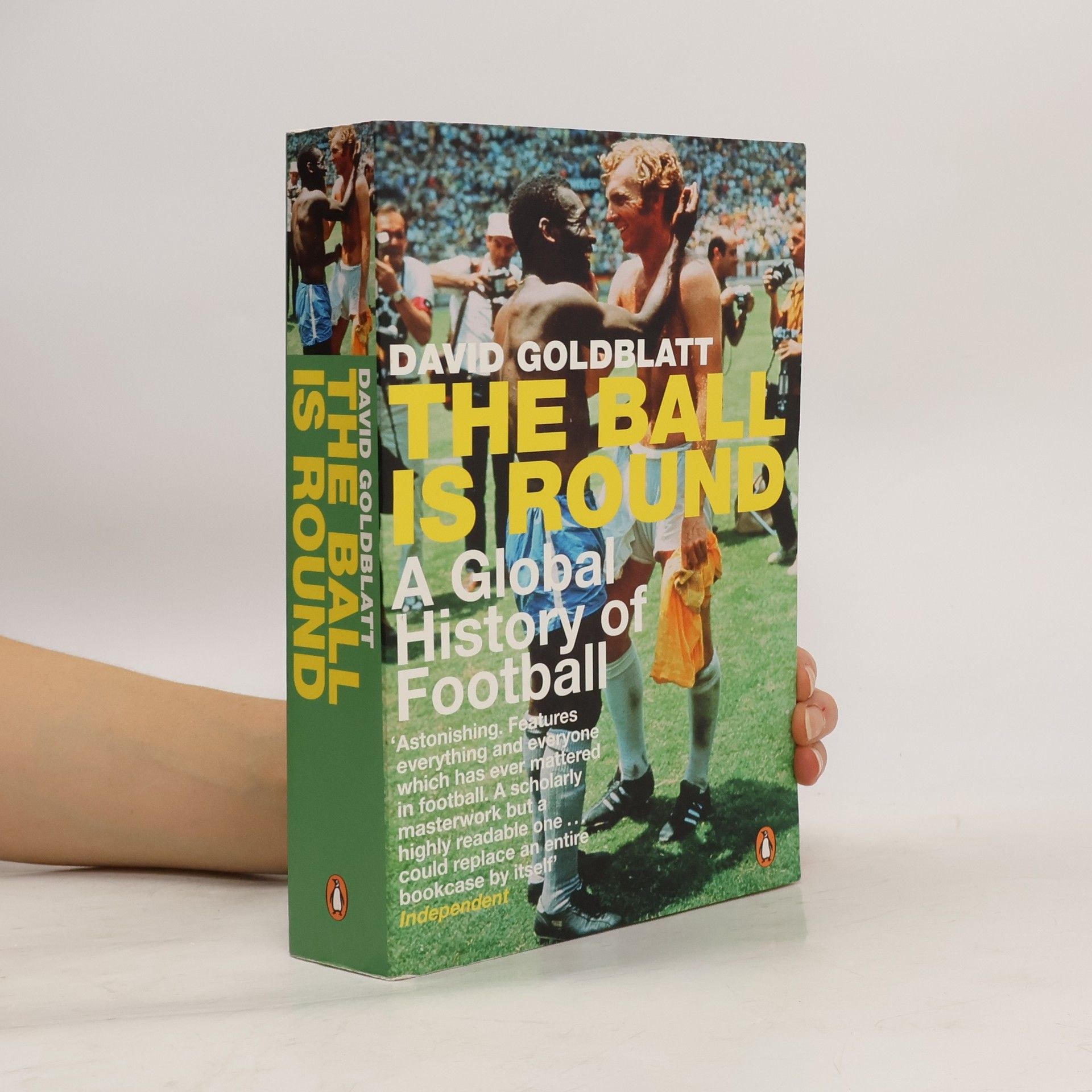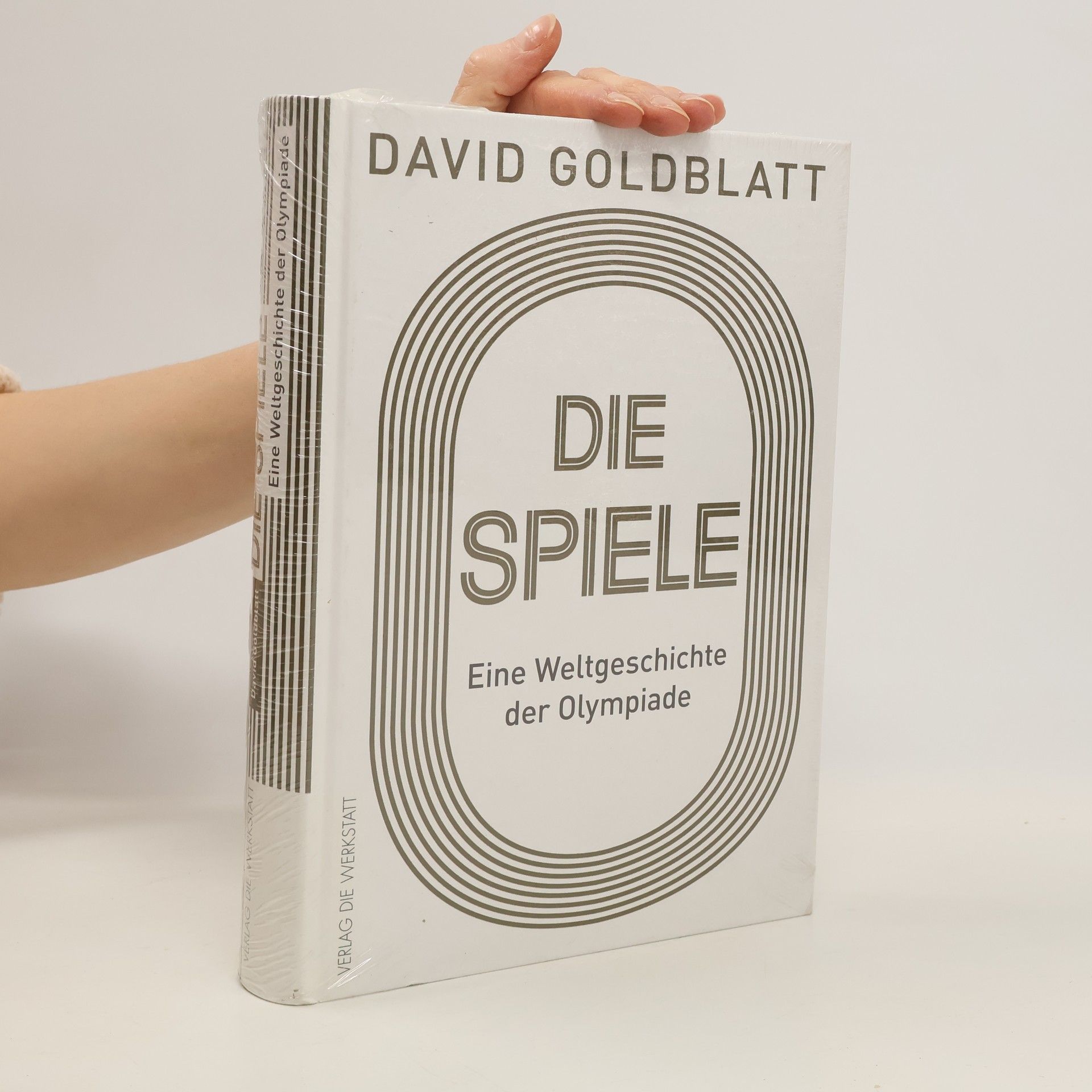Dieses umfassende Fußballbuch bietet alles Wissenswerte von der Geschichte des Spiels über Regeln und Taktiken bis hin zu den wichtigsten Teams und Turnieren. Mit über 700 Illustrationen und aktuellen Informationen zu internationalen Wettbewerben bis 2023 ist es das ideale Nachschlagewerk für Fans und Spieler.
David Goldblatt Book order






- 2024
- 2023
- 2020
The critically acclaimed global story of football in the twenty-first century.
- 2018
Ex offenders at the scene of crime
South Africa and England, 2008–2016
The origins of this book lie in David Goldblatt's simple observation that many of his fellow South Africans, regardless of their race and class, are the victims of often violent crime. "I have asked myself," says Goldblatt, "not least in the fear and fury of holdups with knives and guns, who are you? Are you monsters? Are you 'ordinary' people--if there are such? How did you come to do this? What are your lives?" And so began in 2008 Ex Offenders at the Scene of Crime, for which Goldblatt photographed criminal offenders and alleged offenders at the place that was probably life-changing for them and their victims: the scene of the crime or arrest. Each portrait is accompanied by the subject's written story in his or her own words, for many a cathartic experience and the first opportunity to recount events without being judged. To ensure the integrity of his undertaking, Goldblatt paid each of his subjects 800 rand for permission to photograph and interview them, and any profit from the project will be donated to the rehabilitation of offenders. Ex Offenders also features Goldblatt's portraits and interviews of black subjects in West Bromwich, England, made in collaboration with the community arts project Multistory
- 2018
Die Spiele
Eine Weltgeschichte der Olympiade
Die Olympischen Spiele sind das größte Spektakel der Welt. David Goldblatt erzählt ihre Geschichte von den antiken Vorläufern bis zu den Massenevents von heute. Er beleuchtet das stetige Wachstum der Teilnehmerzahlen und Disziplinen sowie die politische Instrumentalisierung der Spiele. Zudem berichtet er von den ersten Fernsehübertragungen, der zunehmenden Kommerzialisierung, Dopingproblemen und Bestechungsskandalen. Dabei verliert Goldblatt nie den Fokus auf den Sport und seine herausragenden Athleten. Die Kritiken loben das Werk als eines der besten Sportbücher, das je geschrieben wurde, und betonen die exzellente, anekdotenreiche Erzählweise. Goldblatt gilt als führender englischsprachiger Sporthistoriker, und sein Buch wird als erhellend, unvoreingenommen und temporeich beschrieben. Es wird als lebhafte Geschichte der Spiele charakterisiert, die den Nimbus der Olympiade hinterfragt und mit einem scharfen Blick für entlarvende Details verfasst ist. Trotz des ambitionierten Ansatzes bietet Goldblatt eine kompetente Führung durch die Materie. Seine detailreiche Recherche zu politischen und finanziellen Betrügereien der heutigen Olympischen Spiele ist beeindruckend und macht die Analyse faszinierend lesenswert.
- 2016
The Games: A Global History of the Olympics
- 528 pages
- 19 hours of reading
Exploring the evolution of the Summer and Winter Games, this book delves into their transformation into a global phenomenon. It examines the interplay between these events and significant world occurrences, shedding light on their cultural impact and the reasons behind their immense popularity. Through this lens, readers will gain insight into the historical significance and emotional connections that make the Games a cherished experience for millions worldwide.
- 2015
The Game of Our Lives
- 374 pages
- 14 hours of reading
WINNER of the William Hill Sports Book of the Year Award 2015 In the last two decades football in Britain has made the transition from a peripheral dying sport to the very centre of our popular culture, from an economic basket-case to a booming entertainment industry. What does it mean when football becomes so central to our private and political lives? Has it enriched us or impoverished us? In this sparkling book David Goldblatt argues that no social phenomenon tracks the momentous economic, social and political changes of the post-Thatcherite era in a more illuminating manner than football, and no cultural practice sheds more light on the aspirations and attitudes of our long boom and now calamitous bust. A must-read for the thinking football fan, The Game of Our Lives will appeal to readers of Fever Pitch by Nick Hornby and Inverting the Pyramid by Jonathan Wilson. It will also be relished by readers of British social history such as Austerity Britain by David Kynaston. 'Brilliantly incisive. Goldblatt is not merely the best football historian writing today, he is possibly the best there has ever been. Goldblatt's book could hardly be more impressive' Sunday Times
- 2015
"In Boksburg was published in 1982 as one of the earlier photobooks made in South Africa. David Goldblatt, himself from a white background and a critical observer of the dynamics inherent in the racist set-up of his native country, had become interested in capturing the "wholly uneventful flow of commonplace, orderly life" of the white population around him. Boksburg, a legally white-only town on the eastern periphery of Johannesburg which was heavily dependent on black labor, seemed to fit best his purposes, and between 1979 and 1980 he recorded everyday scenes in the streets, shops, clubs, churches, the municipality, homes, gardens and cemetery, choosing a fly-on-the-wall approach. Despite its nuanced complexity, the essay was rejected by Optima magazine which had commissioned it. Several photographs have been added to this Steidl edition, and it contains a new essay by Sean O'Toole, providing keen insight into the history of the book and the story behind the photographs and their subjects."--Publisher
- 2010
Kniha o futbale
- 400 pages
- 14 hours of reading
Povinné čítanie pre každého futbalového fanúšika" encyklopédii nájde prehľadný súhrn histórie futbalu. Dozvie sa o pravidlách, taktike a technike tejto najobľúbenejšej hry. Nájde tu všetko, čo potrebuje vedieť o kluboch, fanúšikoch, rituáloch, štatistikách a výsledkoch.
- 2010
Mit den Ergebnissen der Fußball WM 2010 in Südafrika! Fußball ist der beliebteste Sport der Deutschen und der populärste Zuschauersport weltweit. Dieses Buch, ausgestattet mit 700 einzigartigen, farbigen und computergenerierten Illustrationen und Grafiken, lässt keine Frage zum Kultspiel offen! Hier erfahren Sie alles über die 65 wichtigsten Fußballnationen der Welt, die wichtigsten Wettbewerbe, die besten Klubs, legendäre Spiele, begehrte Trophäen, die berühmtesten Stadien der Welt und die ultimativen Top-Spieler weltweit. Dazu gibt es Informationen über Grundlagen und Hintergründe wie beispielsweise Regeln, Technik und Taktik aber auch eine Fülle von Fakten über Spielsysteme und -strategien, Trikots, Spitznamen und Titelgewinne. Ergebnistabellen aller internationalen Wettbewerbe verschaffen einen detaillierten Gesamtüberblick und runden dieses einzigartige Fußballbuch ab. Ein besonderes Highlight stellt darüber hinaus der gepolsterte Einband in Lederballoptik dar. In Kooperation mit DER WELT!


